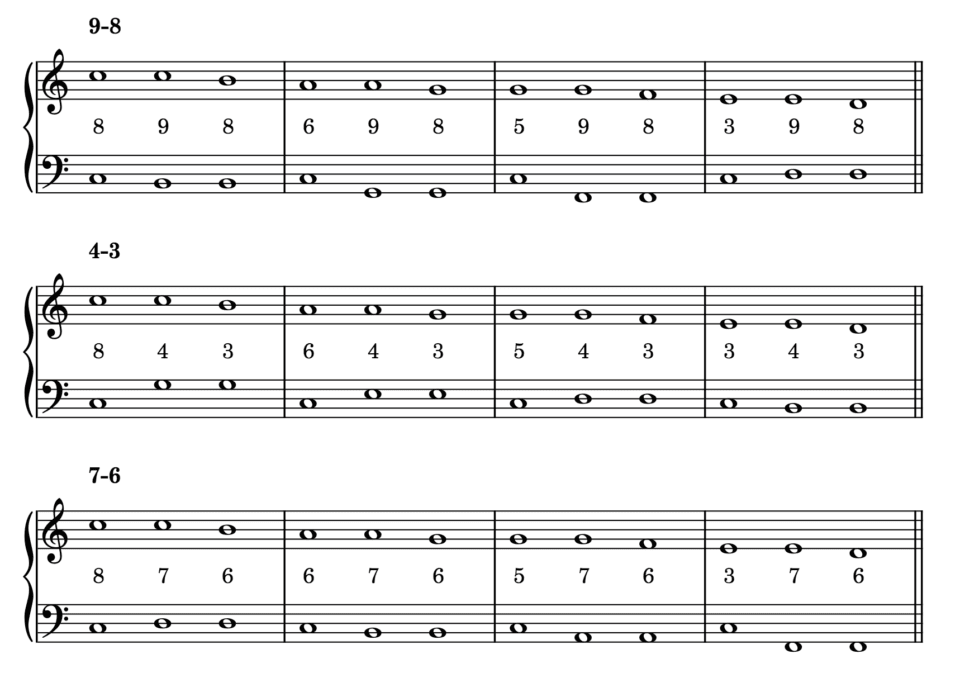Classical dissonance begins with a consonant preparation, continues to the dissonance in question, and finishes with a consonant resolution. Wikipedia says as much.
But as I was falling asleep I started wondering about the topology of suspensions — which suspensions work in which situation. There are three basic suspensions: 9-8, 7-6, and 4-3. In the chart below, I listed all the possibilities of preparation-dissonance-resolution in a somewhat scrambled order:

It turns out the topology of suspensions is somewhat bent. That is to say, not every bass interval is equally represented among each of the suspension categories:
- Upward and downward seconds are capable of supporting any kind of suspension.
- Fifths/fourths can support 9-8 suspensions either upward or downward, but the 4-3 suspension only works with ascending fifths/descending fourths, and the 7-6 suspension only works with descending fifths/ascending fourths.
- Thirds are least capable of supporting suspensions. The direction of the third mandates the suspension type. The ascending third can support a 4-3 suspension. The descending third can support a 7-6 suspension.
I’m sure there’s some math to explain the asymmetrical distribution of bass intervals, but for 11:30 on a Thursday night, I’m going to leave this observation stand as is.
Don’t Miss Next Week’s Post
Sign up to stay in the loop about my music—and ideas for your own composing!


